Today I’m going to share all about my homestay on Lake Titicaca! Despite having travelled to Peru countless times, this was one of those destinations that had somehow managed to evade me.
That’s why after eating my way through Lima, spending a few days soaking in Cuzco’s history, and walking the Inca Trail to Machu Picchu, I finally boarded a bus to Puno: the jump-off point for exploring Lake Titicaca from the Peruvian side.
I didn’t want my visit to feel rushed and I knew I wanted plenty of time to explore the islands, so this is why I decided to go with a 2-day overnight tour as opposed to your standard day trip. That, plus when I heard there was an option to do a homestay on Lake Titicaca, I was sold!
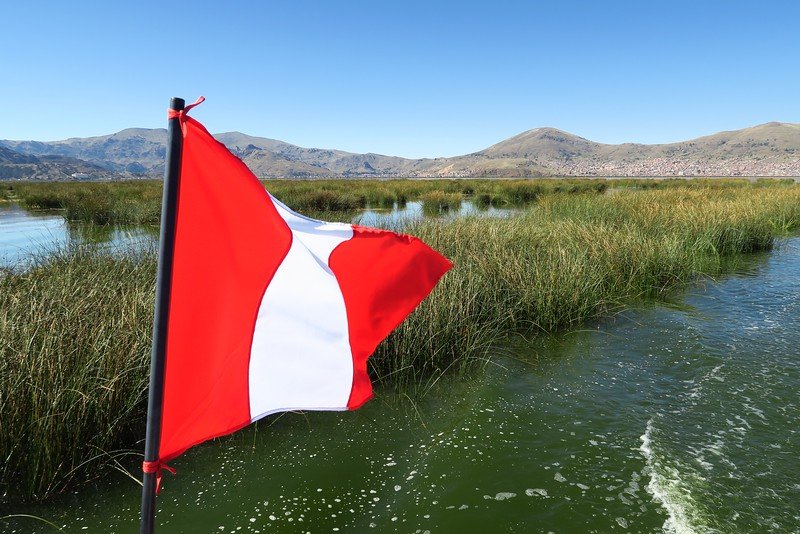
For anyone thinking of doing a similar tour from Puno, here’s a look at what to expect:
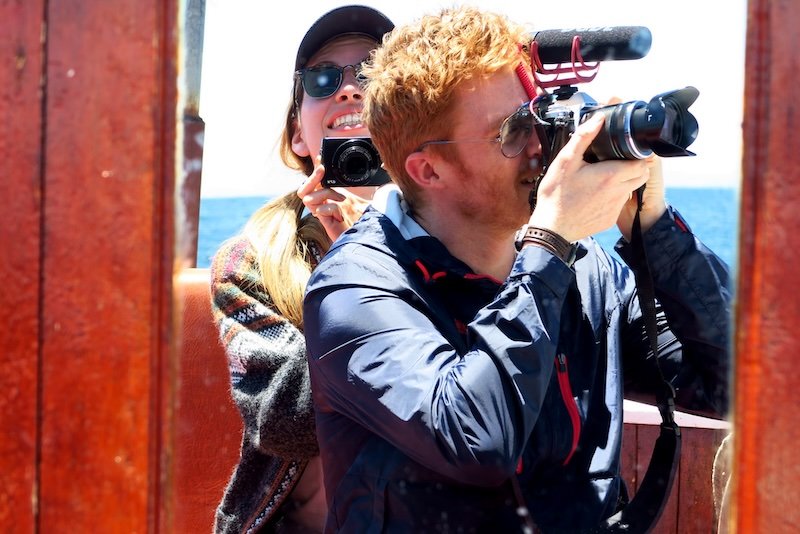
Lake Titicaca Travel Guide: Things to Do, See & Experience visiting Lake Titicaca in Peru
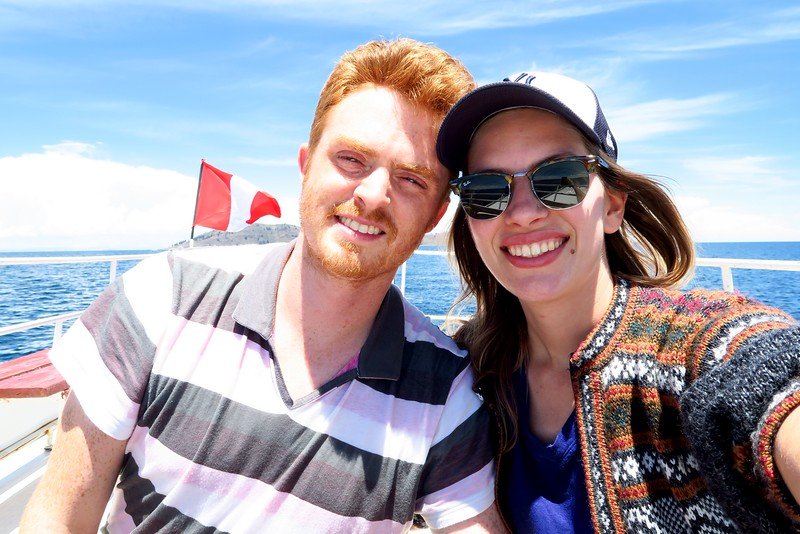
Uros
Day 1 started bright and early with a 7 a.m. pick up from our hotel. From there we drove down to Puno’s harbour where we met our tour guide and boarded the boat that would take us out to Lake Titicaca. We lucked out with a small group of 8 people that really gelled together, which makes the world of a difference when you’re travelling on a guided tour.
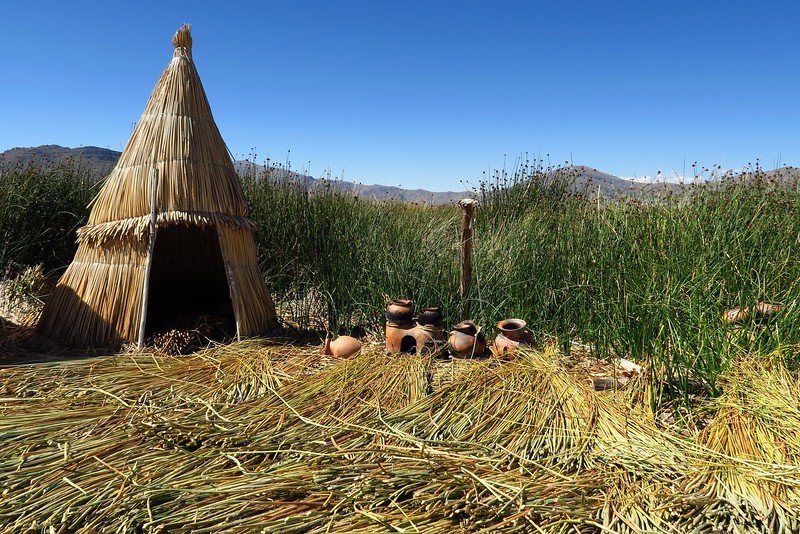
Our first stop of the day was Uros, which is home to the Uru people who live on floating islands made out of reeds. It’s hard to imagine what would drive people to build their homes atop the world’s largest navigable lake when there’s plenty of land available, and the reason for that is purely defensive. If a threat ever arose, the Uru could make an escape and relocate their man-made islands elsewhere.
As for the number of islands that make up Uros? That’s difficult to say because the number is always fluctuating. Our guide explained that several families can live on one island (small islands may have 3 families while larger islands have up to 10), however, if disagreements arise, the families can sometimes cut their islands in half and drift apart. How’s that for solving a disagreement?
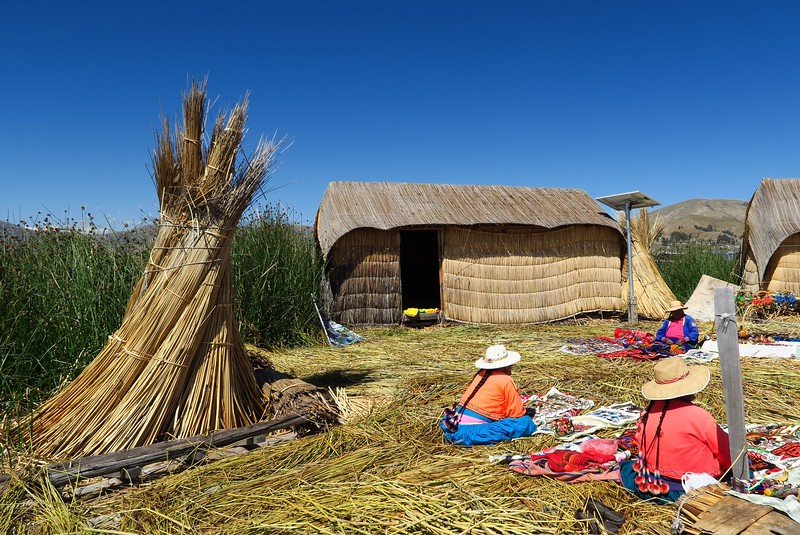
The Uros Floating Islands welcome guests during the day, and we ended up visiting one called Corazon del Lago, which translates into ‘the heart of the lake’. The local authorities are responsible for deciding which island travellers get to visit so that there’s a fair rotation through the community. Our island was home to 3 families, and after a warm welcome, we sat down on a reed log for a brief history.
Here we learned that living on a floating island is hard work. During the rainy season, the island has to be replenished with fresh reeds once a week (this is because the reeds take on moisture and begin to rot, which causes the ground to become wet), however, during the dry season this task only has to be done once a month.
The high humidity that comes from living just a few feet above the water also means that many of the people on the island suffer from rheumatism at a very young age. Keeping their homes dry is a top priority, and one of the ladies on the island was kind enough to invite us into her home where she proudly pointed out the wooden floorboards that help keep some of the moisture out.
After visiting Corazon del Lago, we continued on towards the island of Santa Maria. Here we had the option of continuing aboard the main boat we came in, or boarding a reed boat and rowing over to the main island. You can probably guess which one I chose.
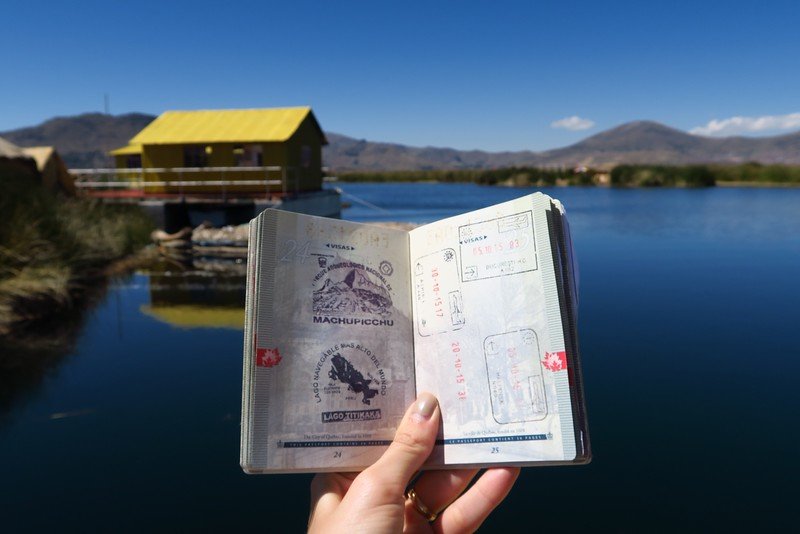
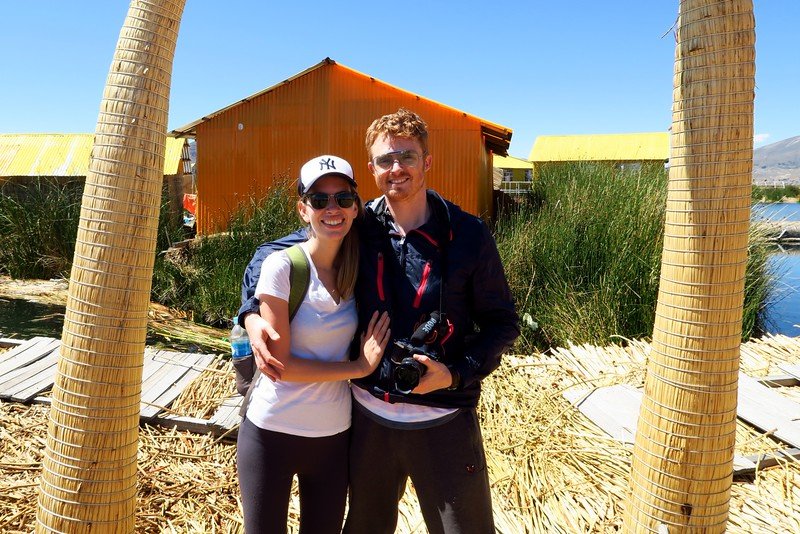
In comparison to the first island, Santa Maria felt quite touristy. There were a few shops with souvenirs, there was a little cafe selling snacks, and you could even get a Lake Titicaca stamp in your passport for 1 sol…which I gladly did.
After a bit of time to shop on the island and snap a few photos, we hopped back on our boat and continued on to our final destination for the day.
Amantaní
From Uros, we took the boat to Amantaní where we would be spending the night. When we arrived at the shore, there were several families waiting to take guests back to their homes.
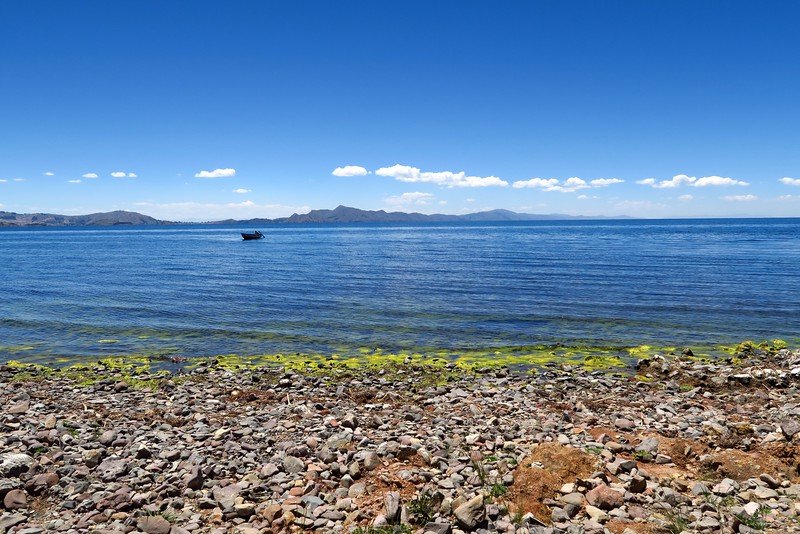
Unlike the Uros Islands which are home to the Aymara, the people who live on Amantaní are Quechua. I found it fascinating that 2 completely different cultures can flourish so close to each other; they each have their own language, their own clothes, and their own belief system.
Tourism is an important industry on the island, and they’ve set up a rotation system amongst the various communities so that each family has a chance to host visitors and supplement their income. The families get to host 10 guests (not all at once), and then this task is passed on to another community on the same island. I asked my host family how often they receive visitors and they told me that they get 10 guests every 2-3 months.
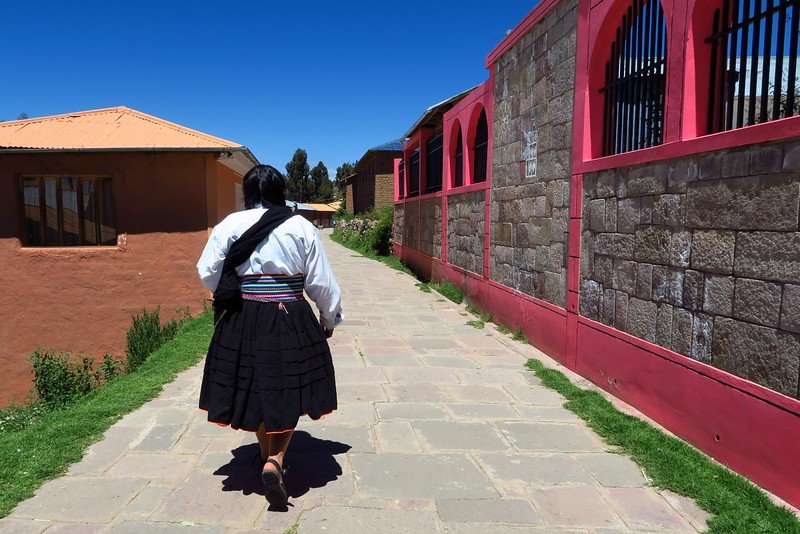
One thing that I really appreciated about this visit was the opportunity to sit down with a few of the women and hear a bit about their way of life on the island. Here we learned that they focus on agriculture and that they plant enough potatoes and corn to feed their families, but they don’t plant any surplus to sell off the island. They also lead a vegetarian diet, whereas some of the neighbouring islands fish and grow their own meat.
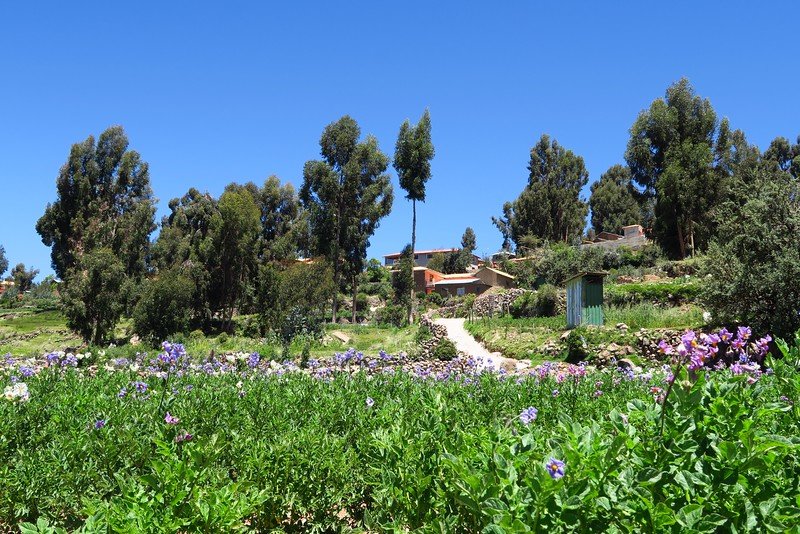
I was also surprised to learn that the beautiful blouses the women wear are actually embroidered with flower motifs by the men. (I’d like to see my husband try to embroider anything!) The men of Amantaní take great pride in this since an embroidered wardrobe is their gift to their wives on their wedding day.
It was also really fun having the women of Amantaní ask us questions like: How many children do you want to have? What do you do for work? And my favourite, do you grow your own corn and potatoes at home? Everyone in our group had to admit their lack of knowledge when it comes to farming.
When it came to meal times in Amantaní, it was interesting to see how the women use staple ingredients to create varied meals. For lunch we had a quinoa soup with carrots and potatoes, followed by a main that consisted of boiled potatoes, fried cheese, rice and salad. Then for dinner, we had a cornmeal soup with carrots and potatoes, followed by a plate full of rice with a tomato and potato omelette overtop. The meals were simple, but they were far from bland.
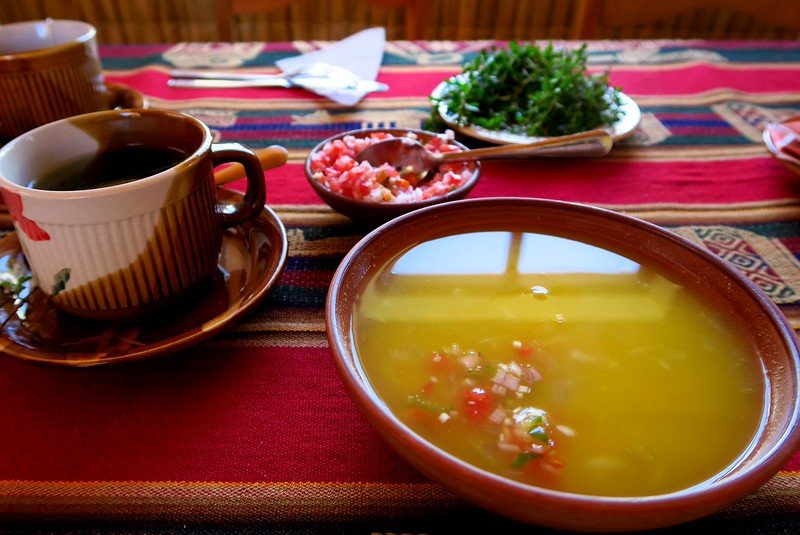
As for the homes on Amantaní, they too were quite varied. There are homes on the island that have outdoor bathrooms with running water, and others that only have outhouses. There are homes that run on solar power, and others that have no electricity.
As we were travelling towards the island, our guide asked us if we had a preference for a rustic homestay or if we wanted something with a few more conveniences. I ended up in a home that had both electricity and an outdoor flushing toilet, neither of which I had been expecting. If you’re a bit apprehensive about doing a homestay, just chat to your guide in advance and they will try to accommodate your personal preference.
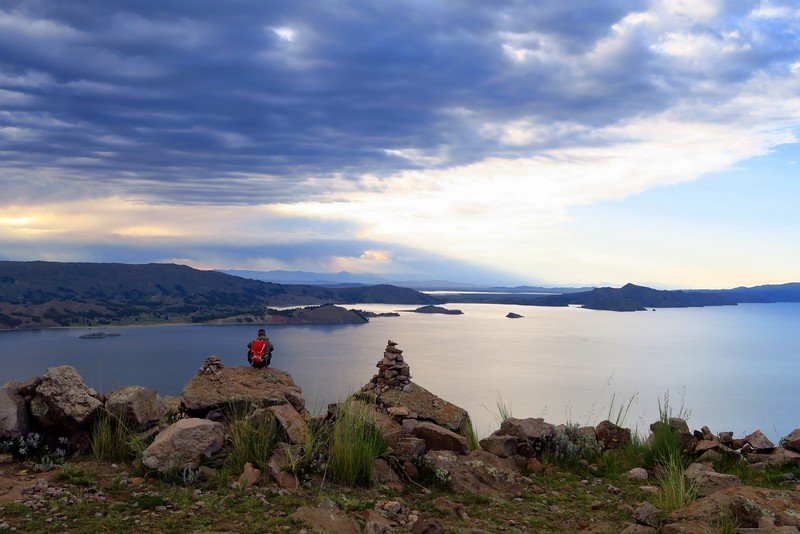
That afternoon in Amantaní, we went for (a very steep) hike that left me breathless. The island has two peaks: Pachatata, which means Father Earth; and Pachamama, which means Mother Earth. We climbed the latter. The plan was to watch the sunset, and despite the overcast skies, the views of Lake Titicaca were spectacular.
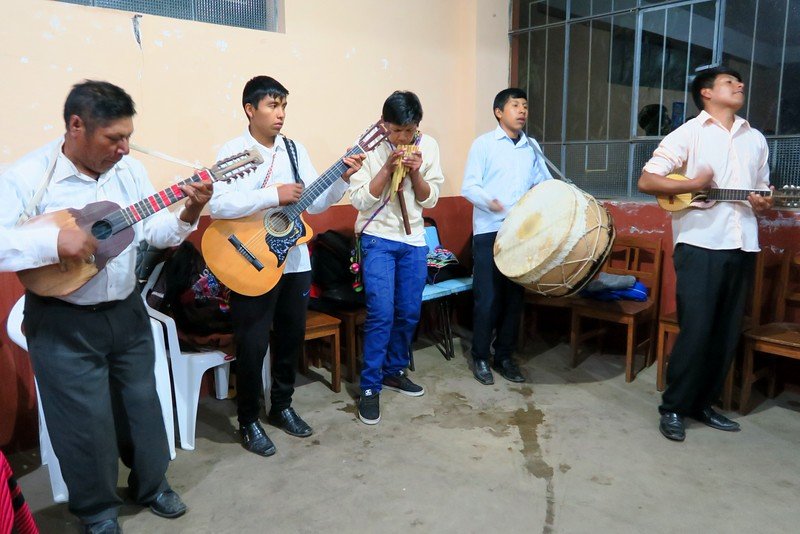
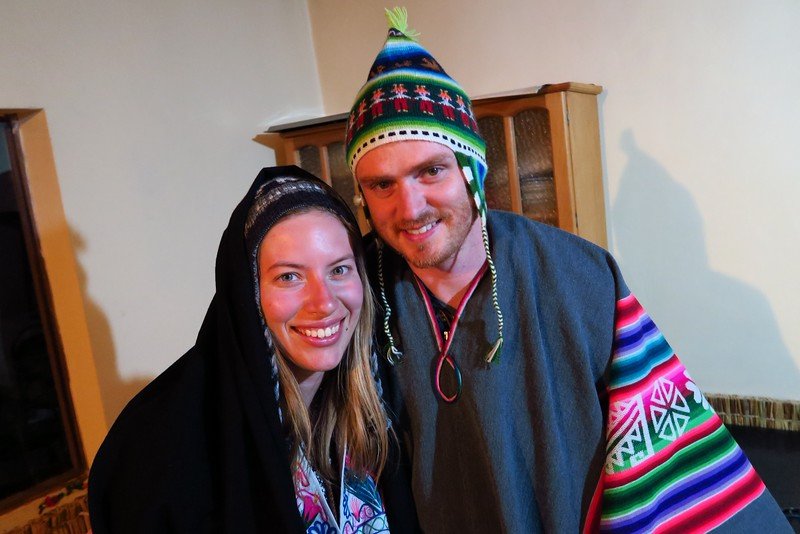
After dinner that evening, it was time for one last outing. Our family let us borrow their traditional clothes (judging from their laughter, I think they found it just as amusing as we did), and then they took us to a party at the community hall where there was a live band playing. I realize this is an event that they just put on for the tourists, but regardless of its authenticity, it was still a really fun night with lots of picture-taking and dancing.
The following morning, we bid our host family farewell at the pier and boarded the boat towards Taquile.
Taquile
Taquile is a pretty special place because the island has received UNESCO status for its “Masterpieces of the Oral and Intangible Heritage of Humanity”. Taquileños are known for their handwoven textiles, particularly knitting, which is performed by men starting at the age of eight.
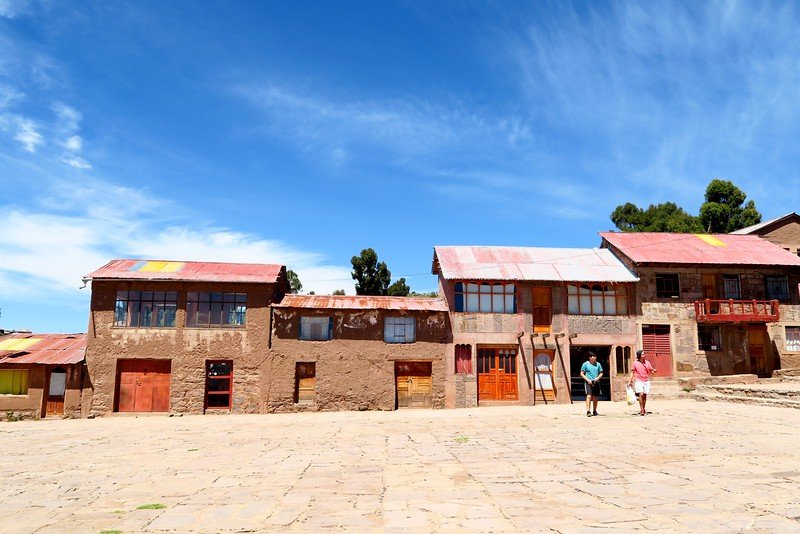
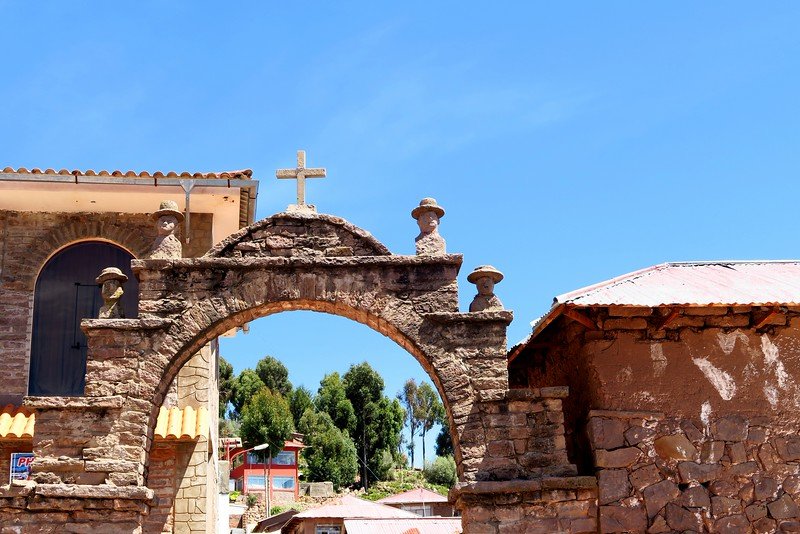
Like Amantaní, Taquile is also Quechua, however, some of their traditions differ. One of the first things we noticed is that the people dressed differently. While in Amantaní the women had black scarves embroidered in colourful motifs, in Taquile they wore black scarfs with colourful pom-poms tied on the end (these indicate that a woman is single).
We also learned that the way men wear their hats in Taquile can say a lot about their current mood: flipping their chuyo to the right means they’re happy, flipping it to the left means they are sad, and flipping it back means they are having an average day. Also, the type of hat a man wears can indicate whether they are single (white and red hat), married (red hat), or if they are an authority figure (wear both a chuyo and a leather hat).
Another fascinating thing was learning that when the women get married, they cut their black tresses and weave these into a belt that they make for their husbands. This belt is the equivalent of a wedding ring. In return, the men have to buy the women a collection of skirts, and the women are expected to wear anywhere between 25-30 of these on their wedding day. I can only imagine how much that weighs!
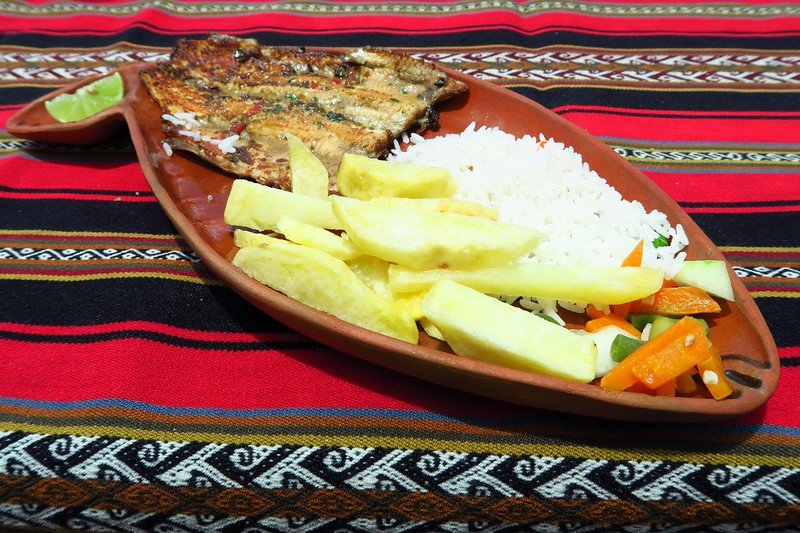
After walking around the island and learning a bit about the local culture, we had a delicious lunch. Unlike Amantaní, this island is not vegetarian, so they had trout on the menu. We enjoyed our lunch outdoors, and then it was time to walk to the harbour on the opposite side of the island where we hopped back on the boat and returned to Puno. And that was the end of the 2-day adventure.
Final thoughts?
In case you couldn’t tell from this really long rambly post, I loved it!
Lake Titicaca is hands down one of the coolest places I have ever visited and it was well worth the journey. Seeing the Uros Floating Islands was pretty cool, but my favourite part was getting to spend the night with a host family in Amantaní, sharing meals with them in their kitchen, and asking questions about their day to day life.
So if you come to Peru, try to tack on a detour to Lake Titicaca!
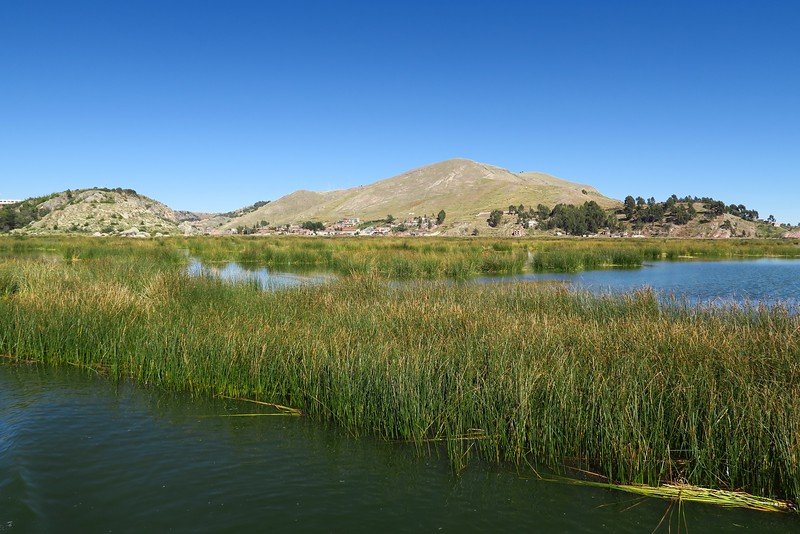
Cost of tour + homestay on Lake Titicaca
I booked my 2-day tour of Lake Titicaca (including visits to Uros, Amantaní, and Taquile) through All Ways Travel. They came highly recommended in my Lonely Planet guide, and I have to agree, their service was great. They picked us up in a timely manner, we had a local guide who was very knowledgeable, and we also travelled as a small group, which made the experience all the more pleasant.
Here’s a break down of the cost of this trip:
- 90 soles for the tour (this included hotel pick up and drop off, a guide for the duration of the trip, and boat transportation to the islands)
- 45 soles for the homestay family (this is for the accommodations, plus lunch, dinner, and breakfast)
- 10 soles for the boat ride in Uros (this is an optional ride on a reed boat)
- 20 soles for lunch in Taquile (this is a traditional trout lunch at a local restaurant)
Aside from this, you may also want to bring a few extra soles to tip your guide and the boat captain, as well as purchase a few souvenirs on the islands. As a final suggestion, don’t forget to get travel insurance before your trip. This should go without saying as you should always be covered when you travel, but even more so when you’re travelling to a place that is quite remote and isolated. Best to be safe than sorry!
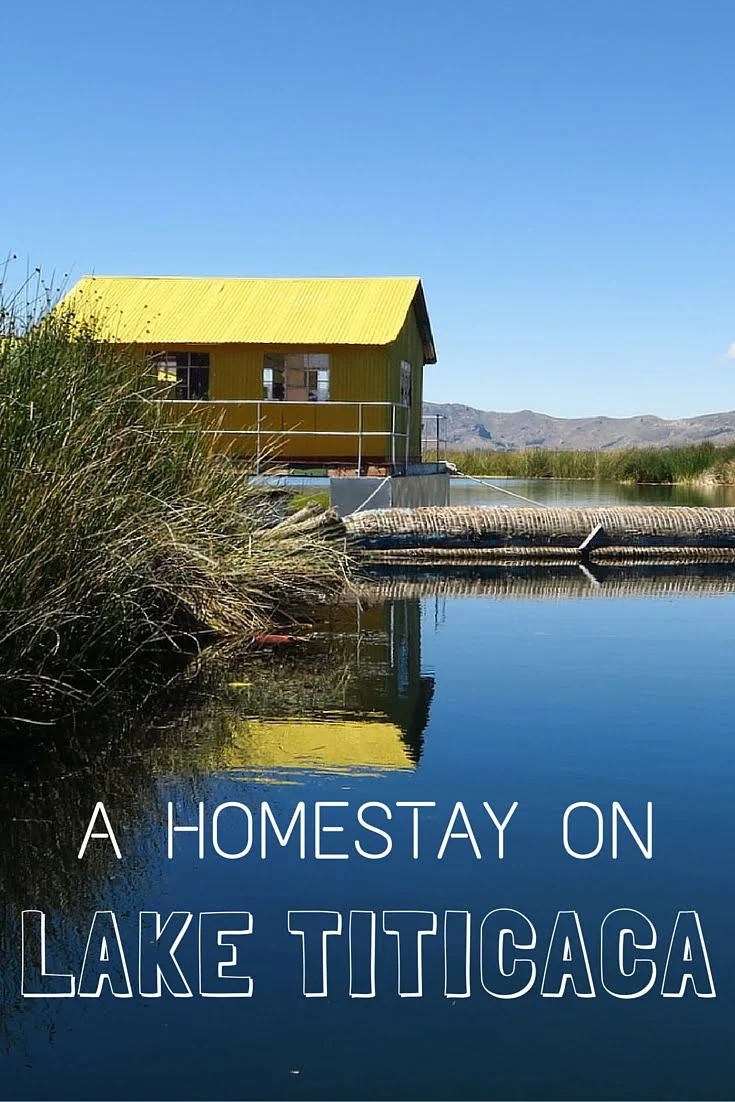
Plan Your Lake Titicaca Homestay: Practical Add-On Guide, Travel Tips, Planner & Itineraries
When to go, weather, and altitude
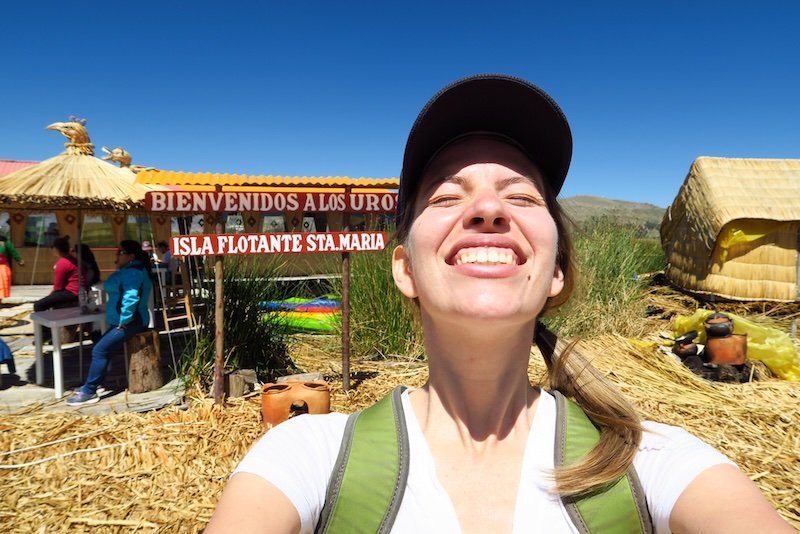
Lake Titicaca sits at ~3,800 m (12,500 ft). That means two truths: the sun is fierce and oxygen is shy. Build in acclimatization time (a night or two in Cusco, Sacred Valley, or Arequipa helps) and keep day one gentle.
Seasons at a glance
| Season | Weather Snapshot | Lake Mood | Best For | Watch-outs |
|---|---|---|---|---|
| May–Aug (dry & sunny) | Crisp mornings, bluebird days, very cold nights | Clear horizons, bright textiles | Photography, hiking to Pachamama/Pachatata | Freezing evenings on Amantaní—pack thermal layers |
| Sept–Oct (shoulder) | Warming days, calm water | Fewer crowds, golden light | Homestays + long boat days | UV still intense; hydrate lots |
| Nov–Mar (rainy) | Afternoon showers, cloudy intervals | Lush terraces, green shores | Culture time, cozy homestays | Choppy water, slick reed paths; bring a shell |
| Apr (transition) | Settling into dry | Fresh mornings, calm | Balanced everything | Unpredictable showers—layers win |
Altitude basics: Sip water constantly, skip alcohol the first evening, eat light, and keep coca/muña tea handy. If you’re prone to altitude headaches, bring your preferred remedy and go slow on uphill staircases (Amantaní has plenty!).
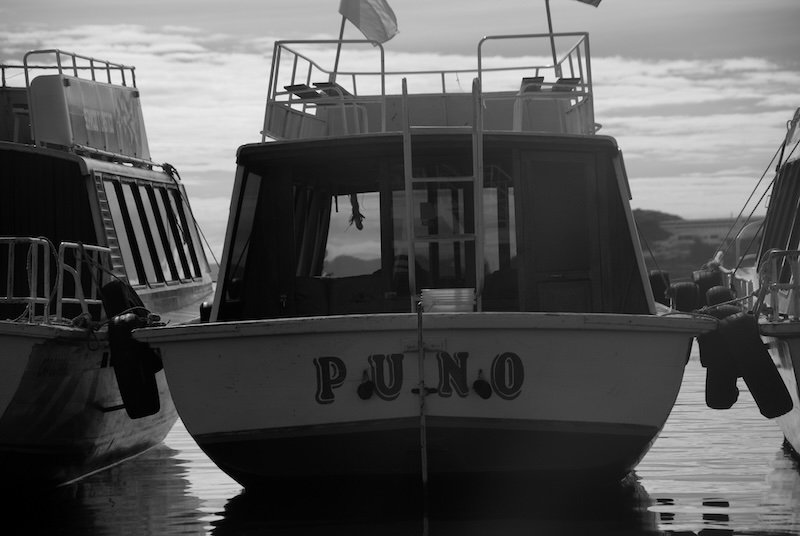
Puno logistics: getting there & choosing a base
How to arrive
- Fly: The closest airport is Juliaca (JUL), ~1 hour from Puno by road. Daily flights from Lima (often also from Cusco).
- Train: The scenic Cusco–Puno route operates on selected days and is an all-day panorama fest.
- Bus: Comfortable day/night buses link Puno with Cusco, Arequipa, and La Paz. Ask for a semi-cama or cama seat.
Where to stay in Puno
- Near the port: Easy morning pickup, quick boat access.
- Centro (Plaza de Armas): Restaurants, ATMs, and warm cafés for your post-lake cocoa.
- View spots: Hillside stays face the lake—for the early-bird sunrise crowd.
Pro move: Sleep in Puno both the night before and the night you return. The first helps you acclimatize; the second lets you enjoy Taquile lunch without clock-watching.

Picking your Lake Titicaca experience (Uros vs. Amantaní vs. Taquile)
Use this snapshot to match islands to interests. Most 2-day tours visit all three in a relaxed loop; day trips usually skim Uros + one island.
Destination snapshot: pick your vibe
| Island | Culture & Crafts | Food Focus | Stay Option | Pace & Terrain | Best For |
|---|---|---|---|---|---|
| Uros (Floating Islands) | Reed architecture, boat-building, Aymara heritage | Day snacks/coffee stands | No overnights on most tours; short visits rotate among islands | Flat reed surfaces; short walks | First-time wow factor + reed-boat ride |
| Amantaní | Quechua communities, embroidery (men stitch floral blouses!), agricultural life | Vegetarian home cooking (quinoa/corn soups, potatoes, fried cheese) | Homestay highlight | Steep paths up to Pachatata/Pachamama; slow & steady | People-to-people connection, sunset hike |
| Taquile | UNESCO-recognized men’s knitting; women’s pom-pom shawls | Trout lunches + Andean staples | Day visit with community-run restaurants | Stone paths, broad steps; moderate walking | Textiles, village life, lake panoramas |
Tour length quick guide
- Day trip: Uros + Taquile (or Amantaní). Tastes like a trailer, not the full movie.
- 2 days/1 night (recommended): Uros → Amantaní homestay → Taquile → Puno. Unhurried, human.
- Custom/private: Add extra time on Amantaní or pivot to lesser-visited communities (ask agencies about community rotations).
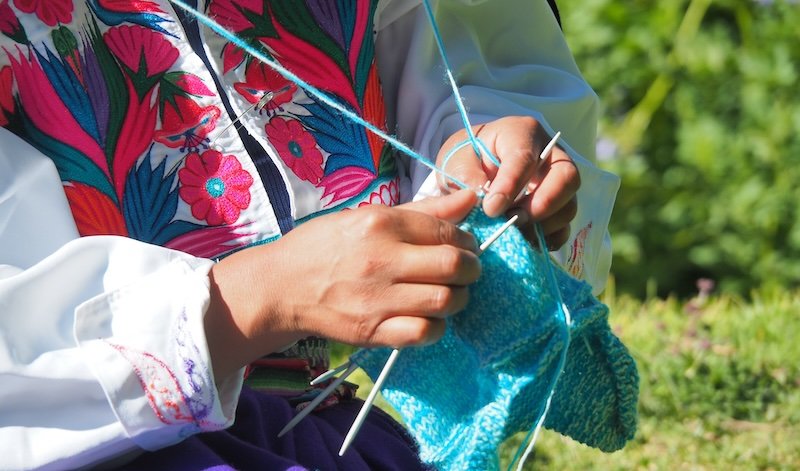
What a 2-day/1-night flow looks like
Day 1 – Uros + Amantaní homestay
- 07:00 Hotel pickup → port check-in.
- 07:45–09:00 Boat to Uros; community briefing; reed-island walk; optional reed-boat glide.
- 09:30–12:00 Cruise toward Amantaní (bring a wind layer + snacks).
- 12:15 Meet host families at the pier; drop bags.
- 13:00 Home-cooked lunch (soups + potato/corn staples).
- 15:30 Hike up to Pachamama or Pachatata for views; buy water en route if you need extra.
- 18:30 Dinner with your hosts; chat by candle/solar light.
- 20:00 Community music/dance night (optional, fun!).
Day 2 – Taquile + return
- 07:00 Breakfast; goodbyes; short walk to the pier.
- 08:00–09:00 Boat to Taquile; uphill path to plaza at gentle pace.
- 10:00 Textile talk; browse co-ops (fair prices, quality control).
- 12:00 Trout lunch (veg options too), open-air views.
- 13:30–15:30 Descent to the opposite pier; cruise back to Puno.
- 16:30–17:00 Port arrival → hotel drop.
Timing flexes with weather and group speed, but that’s the rhythm.
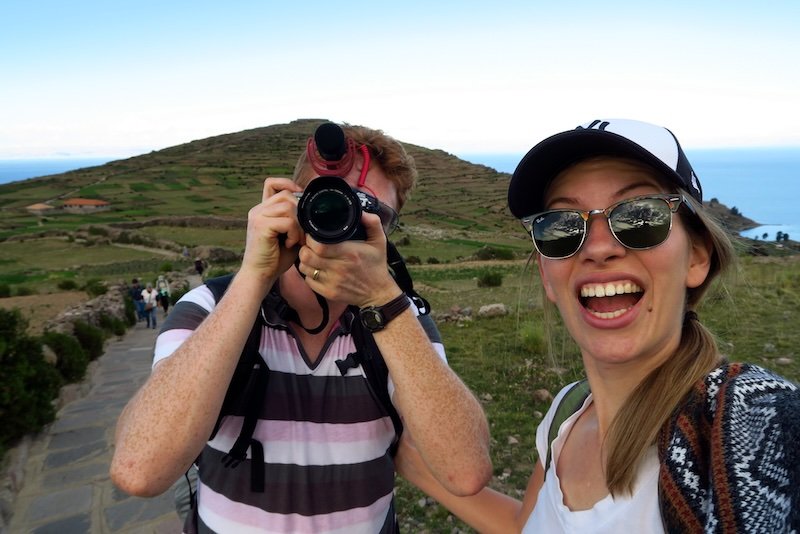
What to pack for the islands (and why)
Daypack essentials
- Passport + cash in small bills (island crafts, snacks, tips).
- Sun armor: hat, sunglasses, SPF 50 (UV at altitude is no joke).
- Layers: fleece or puffy + windproof/rain shell (cold shade, warm sun, surprise sprinkles).
- Water & snacks: you’ll be fed well, but boat rides are long.
- Headlamp/flashlight: for dark yard paths and late bathroom runs.
- Power: small battery pack; some homes have solar with limited outlets.
- Toiletries: hand sanitizer, tissues/TP, lip balm.
- Footwear: closed shoes with grip (reed paths can be springy; stone steps uneven).
Optional but appreciated
- Tiny thank-yous for hosts (not required): kids’ pencils/coloring pads, herbal teas, or a postcard from home. Avoid sweets; dentists are far.
- Motion tabs if you’re boat-sensitive (the lake is usually calm, but wind happens).
- Reusable tote for textiles and snacks.
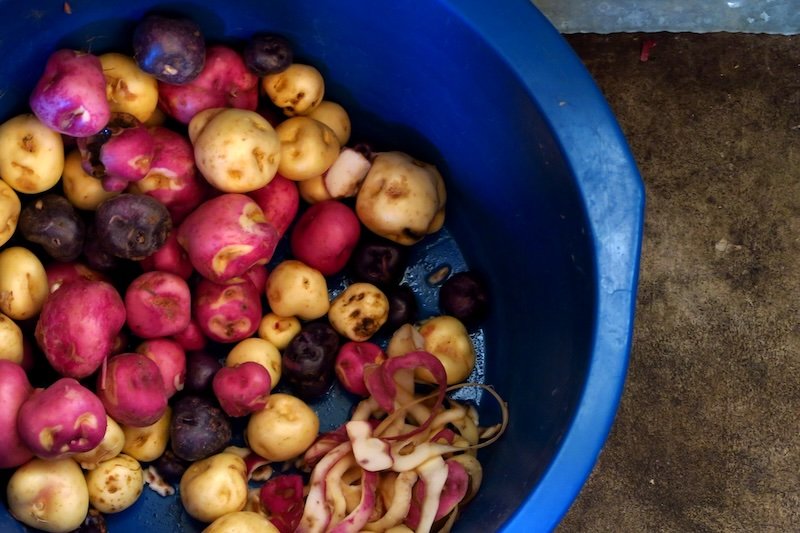
Homestay etiquette that makes everyone happier
- Photos: Always ask first, especially inside homes or during weaving/knitting.
- Shoes: Follow your host’s lead—some prefer shoes off indoors.
- Help offers: It’s okay to ask, “Can I help set the table?” (you may be waved to the bench, but the gesture is kind).
- Language: Spanish is useful; some elders speak only Quechua/Aymara. Simple Spanish works: “Gracias, estaba muy rico.” (Thank you, it was delicious.)
- Gifts: If you bring something, present it modestly to the adult host, not directly to children.
- Purchases: Buying a small craft directly from your host is a meaningful way to support the household.
Tiny phrase list
- Allin punchaw / Waliki (Quechua/Aymara): Good day
- Sulpayki / Yuspajaraña: Thank you
- Imayna kashanki? / Kawkï kejmasti?: How are you?
(Pronunciation will be imperfect. Smiles bridge gaps.)
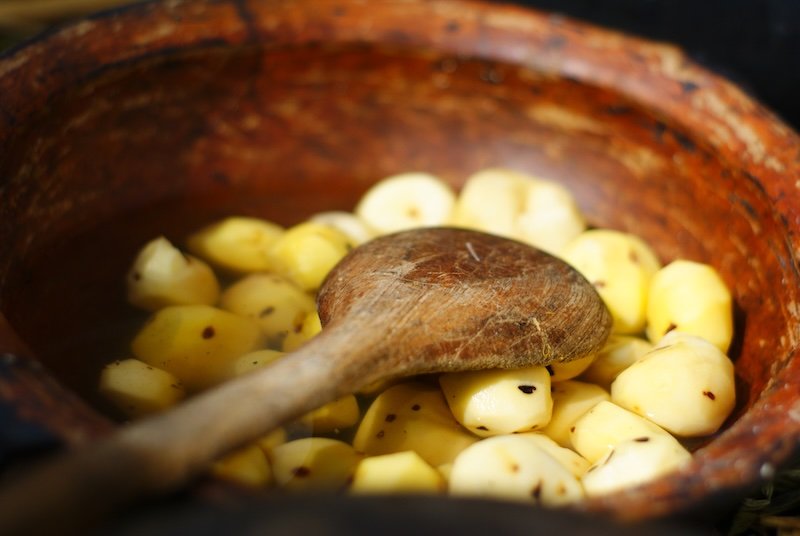
Eating on the lake: what to expect (and enjoy)
- Soups you’ll meet: Quinoa with carrots/potato; cornmeal with herbs; both are cozy at altitude.
- Mains on Amantaní: Potatoes (many varieties), rice, fried farmer’s cheese, tomato/onion salad.
- Taquile lunch: Trout (grilled/simple seasoning) is common; vegetarian plates available—say so early.
- Sips: Muña (Andean mint) tea for digestion; coca tea for altitude; chicha morada (purple corn) when you find it.
- Snacks to bring: Fruit, nuts, dark chocolate (shareable!)—shops are modest.
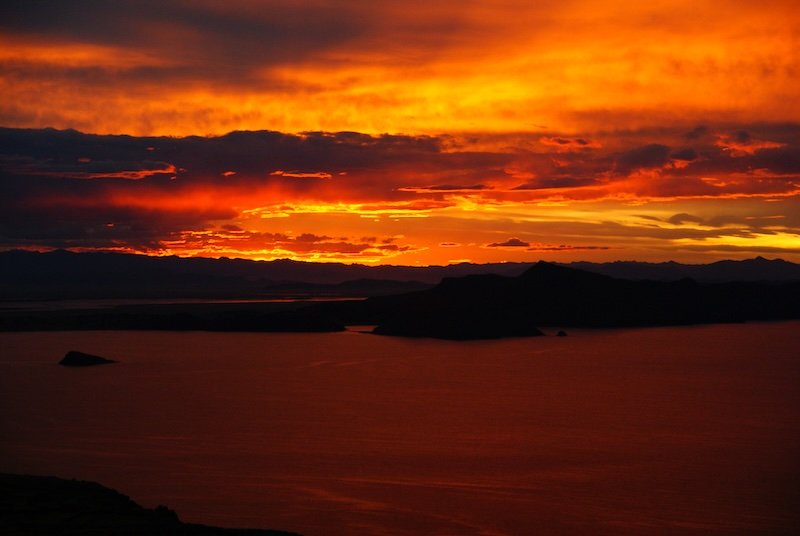
Budgeting & money (with your real-world numbers as a base)
Your main post outlined a solid breakdown for a 2-day tour + homestay. Here’s a broader view so you can tailor:
| Line Item | Typical Spend (soles) | Notes |
|---|---|---|
| 2-day boat tour | ~90 | Includes guide + transport + pickups |
| Homestay contribution | ~45 | Dinner, breakfast, simple lunch, room |
| Uros reed-boat ride (optional) | ~10 | Short glide; fun once |
| Taquile set lunch | ~20 | Trout or vegetarian |
| Tips (guide + boat crew) | 10–20 each | Small bills appreciated |
| Crafts/snacks | 10–100+ | Textiles vary by complexity |
| Port/entry fees | Check on the day | Often included in tour price |
ATMs: Stock up in Puno (Plaza de Armas area). The islands are cash-only.
Responsible travel on Lake Titicaca
- Rotate love: Tours rotate islands for fairness. Embrace the assignment rather than insisting on a specific islet.
- Buy what’s made here: Handwoven belts, knitted hats and gloves, reed miniatures—ask who made it.
- Feet light on reeds: Stick to paths and wood platforms; reeds compress under concentrated weight.
- Ask about stamps: Passport novelty stamps are cute but optional. If you collect one, still budget to support locally (snack, craft).
- No drones without permission: Wind + privacy + evolving rules = ask your guide/community first.
- Respect rest: Nights are dark and quiet; keep music/voices low after dinner.
Photography & view spots (without missing the moment)
- Uros: Low angles show reed layers; portraits by doorways glow (ask first).
- Amantaní: Pachamama at sunset paints the entire lake; arrive early to wander the ruins.
- Taquile: Frame stone arches with lake blues; knitters in the plaza make timeless candids (with consent).
- Boat life: Sit stern-side for wake lines and wide horizons; protect gear from spray and sun.
Health & safety (simple and enough)
- Sun & wind: SPF on repeat; buff or scarf for breezy decks.
- Hydration: Altitude dehydrates fast—keep sipping.
- Bathrooms: Facilities range from flush to outhouse. Carry tissues; hand gel is your friend.
- Pacing: If you feel headachy or breathless, slow down, sip tea, and let your guide know.
- Water: Drink bottled or properly treated water only.
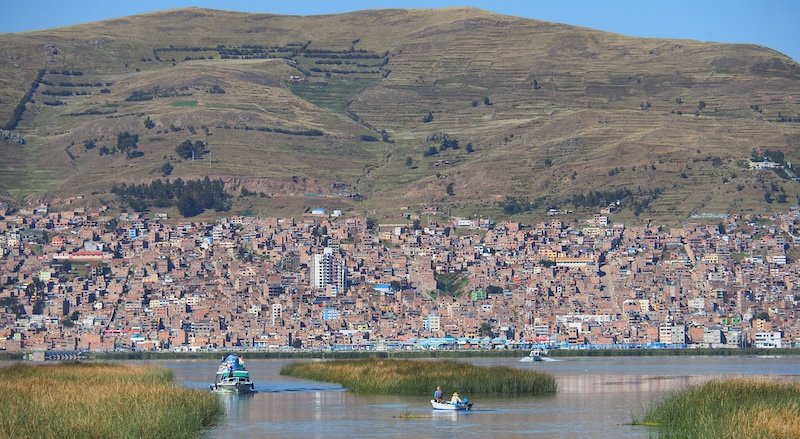
Easy add-ons from Puno (if you’ve got a bonus half-day)
- Sillustani chullpas: Lakeside funerary towers with sweeping views; sunset is magic.
- Kuntur Wasi viewpoint: Condor statue above town—good leg stretch and city panorama.
- Markets: Browse for Andean potatoes, cheeses, and wool layers for your next stop.
Choosing a tour operator
| Ask This | Green-Flag Answer Looks Like |
|---|---|
| Group size & boat type? | Small group, enclosed cabin + open deck, life vests for all |
| Community rotation? | Operator follows a fair rotation; explains how homestays are assigned |
| Language support? | Local guide, clear Spanish/English explanations, cultural context beyond logistics |
| Emergency plan? | Oxygen onboard, first-aid kit, clear return options if you feel unwell |
| Transparency on costs? | Upfront list (tour, homestay, optional reed-boat, Taquile lunch), no surprise add-ons |
| Respectful photography policy? | “Ask first, buy later” approach; no pressure on hosts |
If an agency dodges these, pick the next one. There are plenty of good choices in Puno.
Save-this one-page checklist
- 2 nights in Puno (before & after the lake) booked
- Cash stocked (small soles), passport packed
- Altitude plan: rest, water, coca/muña tea
- Layers: hat, SPF, sunglasses, fleece, shell, warm sleepwear
- Daypack: headlamp, tissues, sanitizer, snacks, power bank
- Motion tabs if you boat-nap poorly
- Tiny thank-you item (optional, practical)
- Camera + protective pouch; phone storage cleared
- Clear understanding of what’s included vs optional
- A curious heart—and a flexible schedule
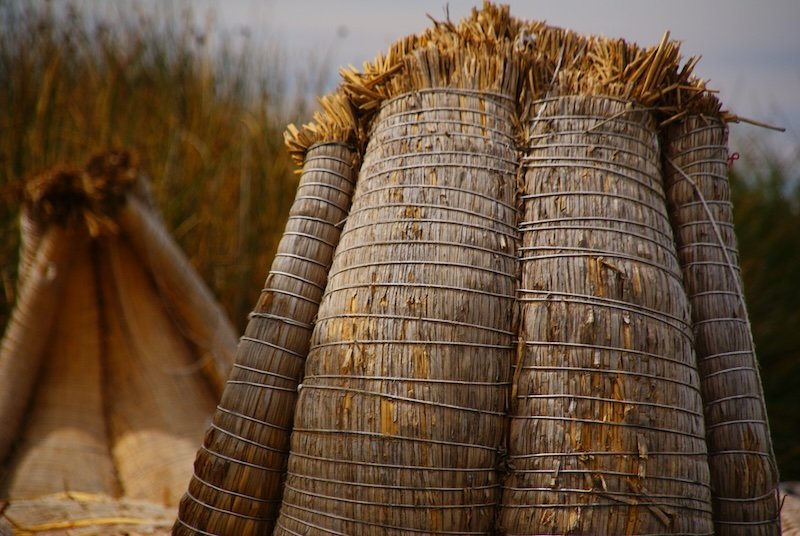
Lake Titicaca Homestay FAQ: Uros, Amantaní & Taquile (12 Essential Q&As)
Will I feel the altitude on Lake Titicaca (≈3,800 m / 12,500 ft)?
Possibly. Give yourself a night in Puno to acclimatize, hydrate constantly, keep day one gentle, and sip coca or muña tea. If you feel headachy or dizzy, slow down and tell your guide—there’s no shame in pacing.
Can I choose which Uros floating island I visit?
No—visits rotate among Uros communities to share tourism evenly. Wherever you land, you’ll see reed building, homes, and (optionally) ride a traditional reed boat for a short glide.
What’s a typical 2-day/1-night itinerary like?
Day 1: Puno → Uros → boat to Amantaní → lunch with hosts → hike to Pachamama/Pachatata for sunset → dinner + optional community music night.
Day 2: Breakfast → boat to Taquile → textiles talk and plaza time → trout (or veg) lunch → hike to opposite pier → return to Puno.
How rustic are the homestays on Amantaní?
It varies. Some homes have solar power and outdoor flush toilets; others use candles and outhouses. Tell your guide if you’d prefer “simpler” or “with basic conveniences” and they’ll try to match within the community rotation.
What will I eat—and can dietary needs be met?
Expect cozy soups (quinoa, cornmeal), potatoes, rice, farmer’s cheese, simple salads; Taquile often serves grilled trout. Vegetarian is easy; mention vegan/gluten-free early so hosts can adjust.
What should I pack for the boat and homestay?
Layers (fleece + wind/rain shell), sun armor (hat/sunglasses/SPF 50), closed shoes with grip, water & snacks, headlamp, tissues/hand gel, small power bank, and cash in small soles. Nights are cold—bring warm sleepwear.
Is the water safe to drink?
Drink bottled or properly treated water only. Bring a reusable bottle to refill in Puno and buy extra before longer crossings.
What’s polite homestay etiquette?
Ask before photographing people or inside homes, follow shoe customs, offer to help set the table, keep voices low at night, and make purchases directly from your host if you’d like to support them. Gifts aren’t required; if you bring one, think notebooks, pencils, or tea—not candy.
How long are the boat rides and are they bumpy?
Puno→Uros is short. Uros→Amantaní can be 2–3 hours; Amantaní→Taquile ~1 hour; Taquile→Puno 2–3 hours. The lake is usually calm, but wind happens—pack a layer and motion tablets if you’re sensitive.
Is the passport stamp on Uros “official”?
It’s a cute souvenir only. If you get one, also plan a small purchase (snack or craft)—that’s a more meaningful way to contribute.
Do I need to tip—and how much?
Tips are optional and appreciated: a small amount for guide and boat crew (carry coins/small bills). Buying a textile or small craft is another great way to support families.
How much does a 2-day trip cost (ballpark)?
Typical basics (per person, soles): tour ~90 (boat/guide/pickups), homestay ~45 (room + 3 meals), optional Uros reed-boat ~10, Taquile lunch ~20, plus tips and crafts. Bring extra soles; islands are cash-only.
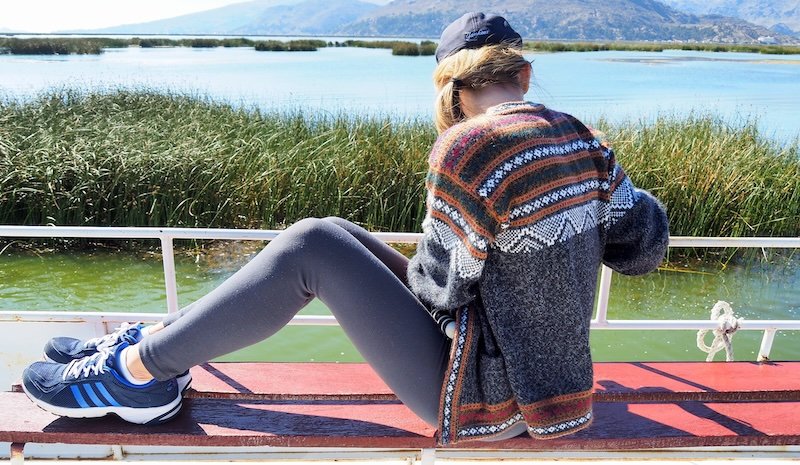
Have you ever done a homestay on your travels?
How was it?

We missed Lake Titicaca when we were in Peru, def have to check it out on our next trip to Peru!
It’s a bit of a detour from the traditional loop, but it’s a fascinating place to visit. I highly recommend the homestay experience if you guys ever go back! 🙂
Your trip looks absolutely incredible! Thanks for the tips!
Thank you, Courtney!
Great post, many who travel to Peru think that it is enough to know Cusco and Machu Picchu, without knowing that you can find much more, such as the amazon, the beaches or the lake titicaca in puno which is unfamiliar to many people, especially puno, which performs a few of the festivals largest in south america, for something Puno is the folk capital of Peru.
Thanks for your input, Sofia. I only did Lima the first few times I’ve visited, but I’m glad I’ve gotten to see more of the country in subsequent visits. There’s still so much I want to see in Peru!
It does sound like an absolutely amazing trip. I’ve heard about the reed islands before and always wondered how it worked. Reading your blog always ends up with me adding more places to my bucket list 🙂
Aww, I’m happy to be contributing to your ever-growing bucket list! 😉
My favorite part of this post was about the floating islands. As I was trying to read it to my husband and he kept interrupting me, I told him I could use an island to split down the middle and drift away for a while (jokingly of course!)
Peru is definitely on our travel list for places to visit and this tour/homestay sounds awesome! Thanks for sharing 🙂
Haha, yeah, the whole splitting up an island concept is pretty fascinating, isn’t it? I hope you guys get to visit Peru soon. 🙂
Looks like an exotic and exciting destination!
OMG Lake Titicaca has to be one of my favorite places of all time! And Tequile Island, with its pristine cultural heritage is so incredible – you didn’t partake in the wedding ceremony where the bride and groom suffered while guests enjoyed all their stuff, did you? Bring back so many memories of an unforgettable trip. We visited Lake Titicaca last on our trip to Peru and it was amazing whereas Machu Picchu was just GRAND.
Thanks for sharing 🙂
No, I didn’t get to attend a local wedding, but it sounds like you had a rather unique experience there! So the guests enjoy the couple’s presents while the couple just sits back and watches?! I hope they get their stuff at the very end.
Great post! We did a homestay in Sapa with the Sapa Sisters group. It was incredible. Learning how our guide lives her everyday life with her family was eye-opening. I also can’t believe she’d hike up the mountain to her house every day, including after having each of her babies – eek!
I did a homestay in Sapa too! Our family was really shy at first, but then by the end of the evening they were passing some local brew around and everyone was laughing. Brings back good memories. 🙂
Lake Titicaca looks fabulous and I always wanted to go there. Glad you made it and loved the great article. Thanks.
Hi, I’m planning do a one night homestay in Lake Titicaca. Do you remember which agency you booked your tour from? I’m hoping to book before we arrive in Puno to save time.
Hi Heather, I booked my 2-day tour of Lake Titicaca through All Ways Travel. They have a small office in a courtyard just off of Plaza de Armas. If you visit the main tourist info booth they’ll be able to point you in the right direction.
Hi Audrey, I am wondering which specific tour you took with All Ways Travel. I am on their website, and if you could direct me to the specific one, I would be immensely appreciative. Thank you for sharing your experience.
Hi Sanja, I did their 2 day / 1 night tour that covers Uros, Amantani and Taquile. This is the link: http://titicacaperu.com/tours/amantani-island/
Would be really grateful if anyone could give me some advice on how to arrange a non touristy homestay at Lake Titicaca. I’ve seen that Tiquille and Amantara are the two possibilities and some people have suggested All Ways Travel in this forum, but having been to their site, a two day/one night homestay trip is coming up at US$90 per person, which seems really pricey.
I am curious that how can you book the tour? which website that you use?
Hello Audrey!
I was wondering if you had any info on how to go about setting up a home stay on amantani island on lake Titicaca without going through a tour agency. And also the level of difficulty in doing so.
Thank you!! Have a great day!
Mike
That might be a little tricky! The tour agency I went with (All Ways Travel) was able to set up our transport out to the islands and they also know the families from years of working together. I heard of one guy who ended up staying a month, so what he did was go as part of a tour, but then he spoke with the family directly and extended his stay that way. You’d need to be able to speak Spanish to make that happen though.
Quick question. Were you talking in Spanish or had they some English?
Our host family spoke Quechua as their first language, but they also knew a fair bit of Spanish. They spoke no English, but you’d be surprised at how much you can communicate with gestures and facial expressions, so don’t let that deter you. 😉
Off for a brief trip to Peru soon and I’ve found all your posts so helpful! Just one question: what time did your tour finish on the second day? Would it have given you enough time to get the bus to Arequipa? Or did you stay another night in Puno?
Thanks for such an informative and detailed report. I’m going to Peru in December and plan to spend a few days around Lake Titicaca. I wanted to do something like this, so will contact All Tours now to try to arrange something.
Happy travelling!
Anna
I have read your report from Lake Titacaca with the greatest of joy 🙂 We are going there next fall and we will do a homestay at Amantani. Thanks a lot!!! I can´t wait to go there 🙂
All the best from Susan in Sweden
I am definitely doing this! Thanks for all the info. Makes it much easier to plan. 🙂
Thank you for your informative post. I went to AllWays Tours website and it said this was the cost for the tour which seemed very different from the breakdown of the cost of the trip and I am a bit confused.
CLASSIC AMANTANI TOUR 2DAYS-1NIGHT $35,00 per person
LODGEMENT AND MEALS AT LOCAL FAMILY HOUSE $17,00 per person (amount to be paid directly to your host family in Amantaní)
NET PRICE PER PERSON IN US DOLLARS
Hi Rishauna, I did my tour almost 2 years ago, so it makes sense that the prices would have gone up by a couple of dollars. It still sounds like a really good deal to me. Visiting the islands is a pretty cool experience!
Do you have any recommendations for a small gift to get a host family on lake Titicaca? Do you think they would appreciate any spices or candles? Any recommendations would be great as I know they wear very traditional outfits! Thanks!
Hi Audrey,
I would just like to say that after reading this post, I have actually booked this homestay at lake Titicaca! thanks for your insight !
Hi,
I am hoping to dothis however I have a sensitiveback and am wondering what sort of beds you sleep on for home stays? Eg a mattress or the floor or a straw mat?
Thanks,
Natasha
Hi Natasha, when we arrived on the island our guide told us we could opt for a rustic homestay or one with a few more comforts. She then placed us accordingly with each of the hosts who were waiting for us on the shore. We opted for something more comfortable and had beds, mattresses and electricity. I’d have a chat about this with your tour operator beforehand so you know what to expect.